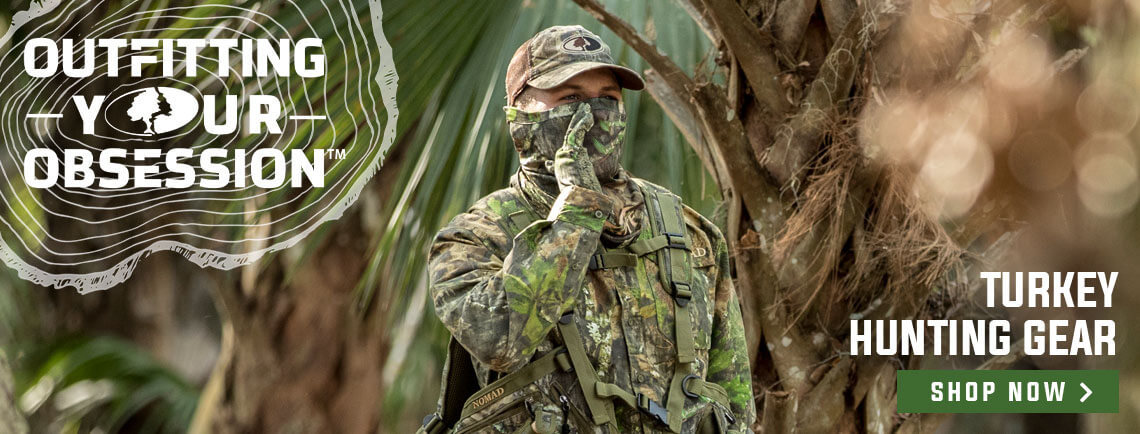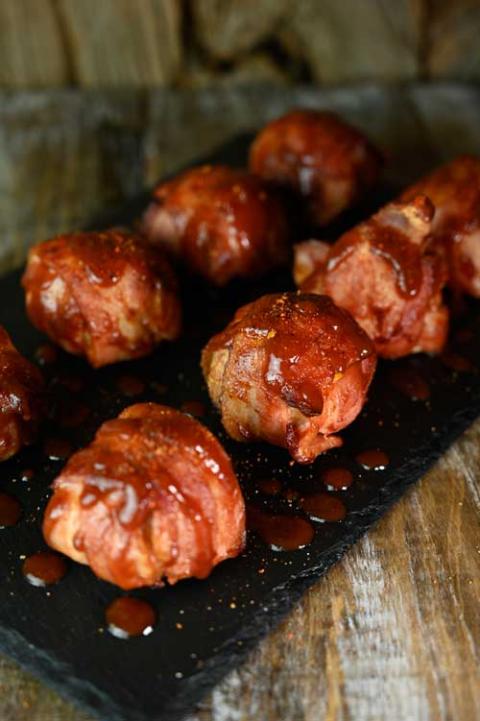One of the joys of taking a new hunter hunting is answering all their questions. Many questions are the same ones you asked as a kid. Questions like where do deer sleep, what kind of duck is that or how many squirrels can we shoot are all easy enough to answer. Dressed in your turkey hunting camo, you are the Google of their turkey hunting world. Occasionally, there is that question that you always wanted to research but never got around to. Something as simple as “what do turkeys eat” can have you scratching your head. Just in case, let’s look into this question a little further.
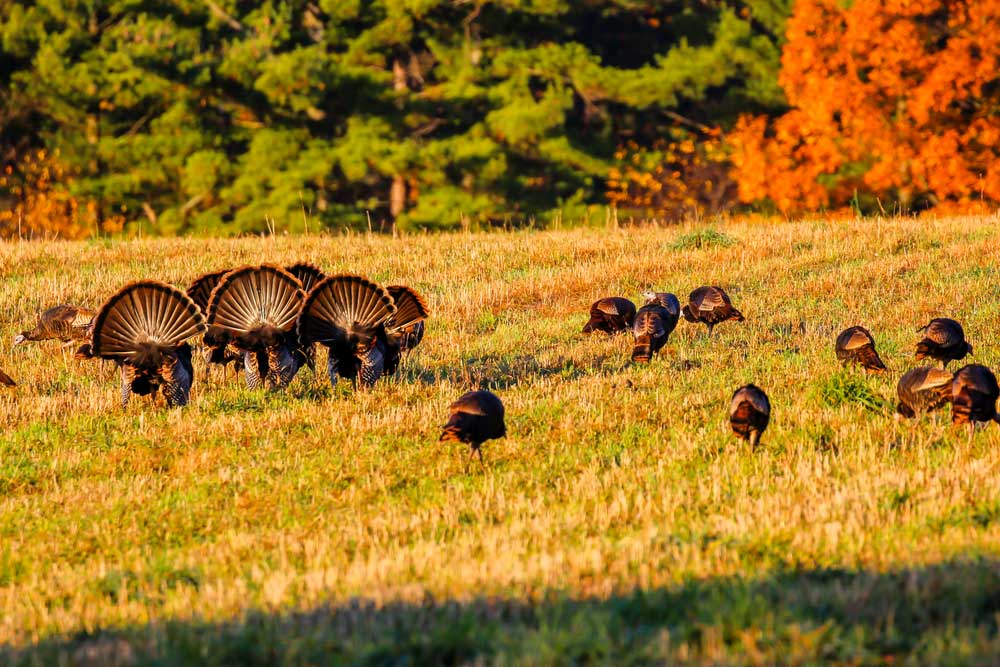
An Omnivorous Turkey
When sharing your hunting tips with the youngster, explain that turkeys are omnivorous. Omnivorous means they will eat plants and animals. Depending on their environment, they may feed more on plants than animals. Don’t be surprised if you open up a Merriam’s turkey in South Dakota and find it has been feeding on clover or find that a Florida Osceola turkey has been eating lizards. Environment, season and what’s available at the time are all factors in a turkey’s diet.
For argument’s sake, let’s focus on a normal year. Hurricanes, springtime blizzards, drought or floods are all wild cards that affect a turkey’s diet. You must consider that the north country has longer winters and the south has longer summers. Winter food sources are typically available for longer periods up north, while summer food sources are available for longer in the south.
WATCH: Learn Different Owl Calls to Make a Turkey Gobble
What’s on the Turkey’s Menu
Turkey calling for beginners can be both fun and frustrating. When it gets frustrating, shift the conversation to what turkeys eat. Explain that what is the most plentiful is always on the menu. If a large field of clover is available, they will feed there every chance they get. Clover is especially sought-after, as it is a food source in itself, but it also attracts many of the insects that a turkey is looking for. Clover and other grasses are tender and easy to find in the spring. Spring rains will keep the ground soft, making it easy to scratch out bulbs and insects from the soil. Many deer hunters who regularly plant clover in their food plots often find turkey feeding there.
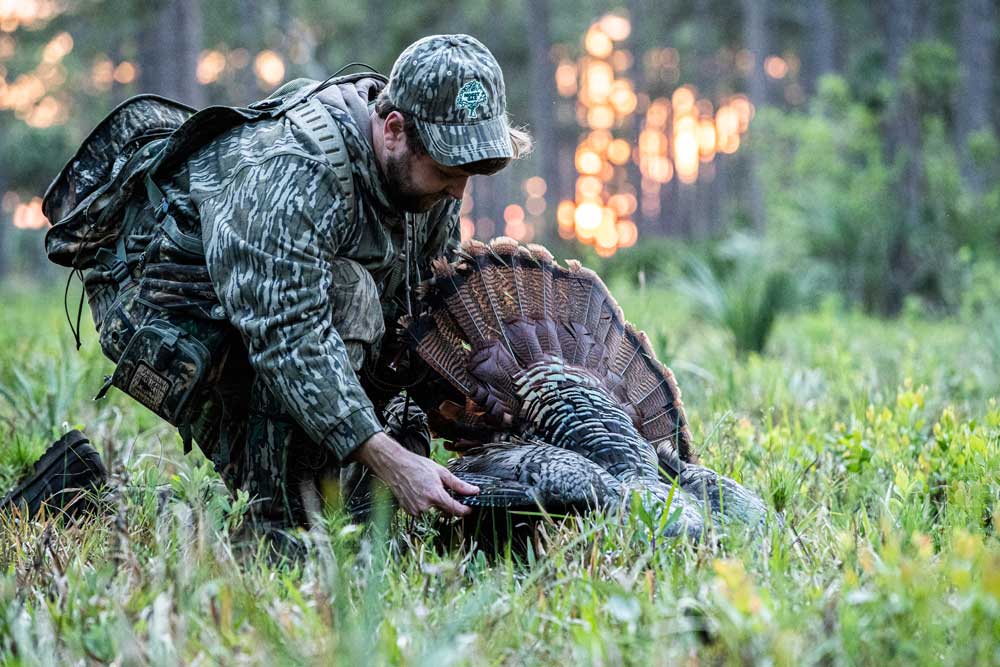
Summer Menu
Clover and grasses will mature during the summer months, making them tough and less palatable to turkeys. Insects and berries are more plentiful and, in many areas, turkey shift their focus to these food sources. Young poults are on the lookout for grasshoppers, caterpillars or small lizards as their bodies crave protein. The grass and brush are taller and keeps them out of sight of airborne predators. Turkeys tend to feed off and all day during the summer. Just like any teenager, the young poults are always hungry.
Fall Menu
With fall's arrival, turkeys find that insects and berries are harder to find. However, acorns from white oak, red oak and black oak are dropping. Pecans, chestnuts, persimmon, and beech nuts are hitting the ground, too. Turkeys are on the lookout for the fruits and seeds of various evergreen trees and shrubs. Turkey foraging shifts from open meadows to more wooded areas. Turkey will forage through woods quickly, as the competition for mast crops is fierce. Squirrels, deer, hogs and other animals are looking at the same menu as the turkey.
In agricultural areas of the country, turkey will frequent corn and wheat fields in the fall. Especially after the harvest, any grain spilled or left behind is a treat for turkeys this time of year. It’s not unusual for turkeys to frequent these fields late into the fall and early winter months. The opportunist turkey will not pass up such an easy meal.
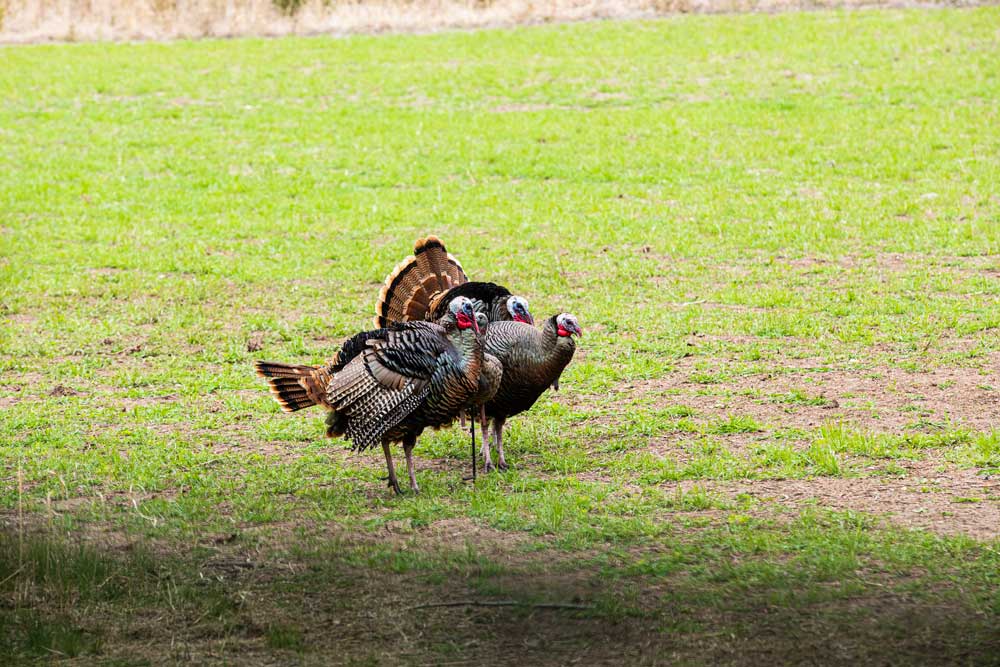
Check Out Our Video on Turkey Hunting Tips
Winter Menu
In the winter, turkeys are foraging for what was missed during the fall. In some cases, a late acorn drop or missed persimmon grove can provide a winter meal. With the winter comes snow, and deep snow is difficult for turkeys to scratch through. There are usually enough spots on a south-facing slope or heavily used trail with less snow. These spots help turkeys scratch through for food. Turkeys may stay on the roost for extended periods until the snow blows off or melts enough for them to forage.
Turkeys are very smart and very opportunistic regarding their diet. They quickly learn that ranchers will feed cattle during the winter and that a bale of hay or feed trough can provide a meal. Grain or pellets are often spilled and left by the cattle. Even after the hay is eaten, seeds, grains and forage are left behind. Turkeys will turn over a cow patty to inspect insects or grain that has passed through in it.
A Balanced Diet
A turkey’s diet will vary as seasons and conditions change. It’s not that Florida’s Osceola prefers a lizard over the corn left over in a Nebraska cornfield. Rio Grande turkey do not prefer dove weed over a Tennessee pawpaw. It is just that the turkey adapts to the region they live in and forage according to what is available. Knowing what food is available and when it is available in your neck of the turkey woods can help you answer that young hunter when he asks you the question: “What do turkeys eat?”

